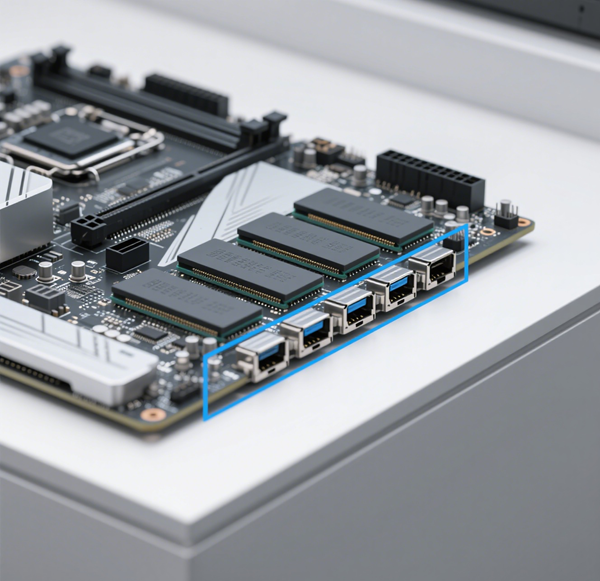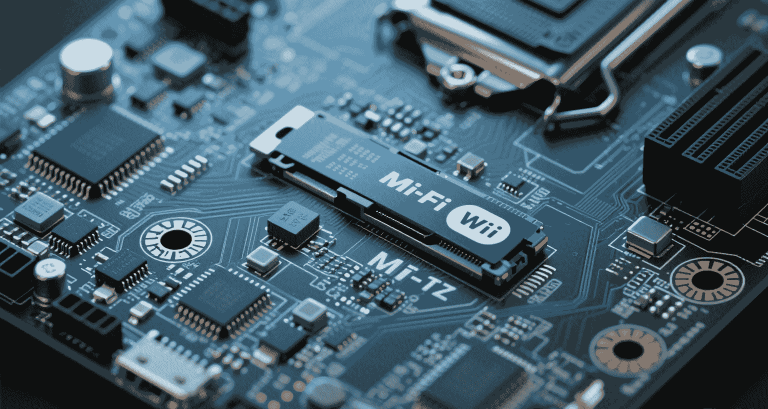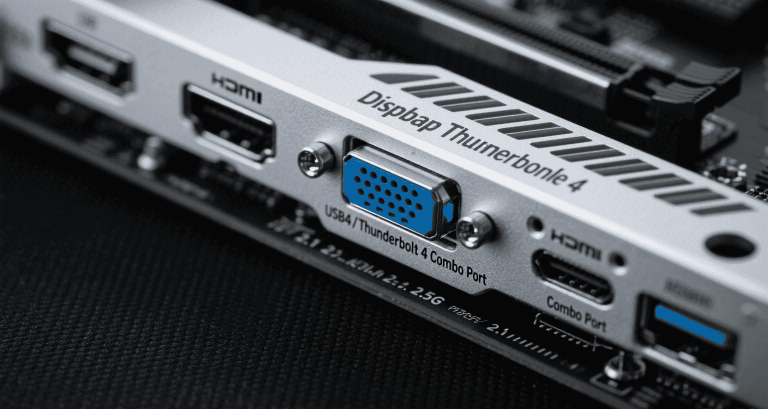Mini-ITX Boards with 4 RAM Slots: Design Constraints

Table of Contents
- Essential Introduction
- Mini-ITX Form Factor and Memory Constraints
- Market Availability and Rarity of 4-DIMM Mini-ITX Boards
- Mechanical and Electrical Design Considerations
- Memory Configuration and Performance
- BIOS Memory Training and Stability Tuning
- Thermal Management Challenges
- GPU Clearance and DIMM Slot Conflicts
- SODIMM vs UDIMM Compatibility
- Chassis Compatibility and Integration
- Application Scenarios
- Power Delivery and Overclocking Considerations
- Supply Chain Planning and Procurement Risks
- Future Trends and Emerging Technologies
- Cost and BOM Considerations
- Best Practices and Recommendations
- Conclusion
- References and Further Reading
Essential Introduction
High-capacity memory is increasingly essential for embedded platforms, advanced analytics, and edge computing workloads. Traditional Mini-ITX boards offer only two DIMM slots, which can limit the scalability of your applications. Emerging 4-DIMM Mini-ITX boards deliver higher memory ceilings in a compact footprint but require deliberate design choices. This guide equips hardware engineers and embedded system integrators with expert insights into selecting, integrating, and maintaining 4-DIMM Mini-ITX solutions for demanding environments.
Mini-ITX Form Factor and Memory Constraints
Before choosing a board, it’s important to understand why Mini-ITX boards have been traditionally limited in memory expansion and what design trade-offs occur when adding four DIMM slots.
Standard Mini-ITX Footprint
The Mini-ITX specification defines a board size of 170mm × 170mm (6.7″ x 6.7″). This compact footprint leaves limited space for memory slots, VRMs, CPU socket, and connectors.
- 4 mounting holes compatible with ATX/Micro-ATX trays
- Single PCIe x16 slot
- Rear I/O panel matching standard ATX cutouts
Engineering Trade-Offs of 4-DIMM Layouts
To fit four DIMM slots, designers must:
- Use higher-layer PCB stack-ups for routing
- Implement tighter impedance control
- Increase VRM capacity to handle more modules
This increases cost, complexity, and thermal density.
Market Availability and Rarity of 4-DIMM Mini-ITX Boards
Only a few manufacturers offer such boards due to low demand and production complexity.
Overview of Available Platforms
- AMD AM4/AM5 workstation Mini-ITX with 4 UDIMM slots
- Intel LGA1700 Mini-ITX with ECC UDIMM support
- Embedded SODIMM Mini-ITX targeting industrial applications
Sourcing and Lead Time Challenges
Common challenges include:
- OEM-only availability
- Extended lead times (8–16 weeks)
- Short product lifecycles with frequent EOL transitions
Mechanical and Electrical Design Considerations
Mechanical clearance and electrical integrity are primary concerns with 4-DIMM Mini-ITX boards.
DIMM Socket Placement and Clearance
Adding slots increases proximity to the CPU socket and PCIe slot, requiring careful cooler and GPU selection.
Mechanical Stability Under Load
Fully populated slots increase board flex. Industrial deployments require stiffer trays and vibration damping.
Trace Length and Signal Integrity
Longer trace lengths degrade DDR5 signal quality. Manufacturers often use higher-quality PCB materials to reduce timing errors.
Memory Configuration and Performance
Four DIMM slots do not automatically enable quad-channel bandwidth.
Supported Capacities and Speeds
| Memory Standard | Max Capacity (4 Slots) | Common Speeds |
|---|---|---|
| DDR4 UDIMM | 128GB | 2133–3600MHz |
| DDR5 UDIMM | 192GB+ | 4800–7200MHz |
Dual-Channel vs Quad-Channel Myths
Even with four slots, most CPUs remain dual-channel. Capacity increases, but bandwidth does not double.
ECC and Registered Memory Support
Some models support ECC UDIMMs, beneficial for scientific computing and virtualization workloads.
BIOS Memory Training and Stability Tuning
4-DIMM configurations complicate POST and stability.
Common POST Delays
Memory training may take 60–90 seconds. This is normal behavior and requires patience.
Memory Profile Configuration
- Use XMP/EXPO cautiously
- Consider manual tuning for voltage and timings
Thermal Management Challenges
Dense DIMM banks and more VRMs lead to higher temperatures.
VRM Cooling and Power Delivery
More phases are required to support additional modules. Heatsinks can become saturated without airflow.
Airflow Over Dense DIMM Banks
- Top-down coolers improve memory airflow
- Side intake fans can reduce hot spots
GPU Clearance and DIMM Slot Conflicts
Large GPUs may block DIMM latches or interfere with module clearance.
Compatibility Mapping
Review mechanical drawings to ensure clearance before finalizing parts.
Low-Profile Memory Alternatives
LP UDIMMs or SODIMMs can reduce interference and improve cooling.
SODIMM vs UDIMM Compatibility
Each memory type has unique characteristics.
| Feature | UDIMM | SODIMM |
|---|---|---|
| Form Factor | Full-height | Compact |
| Typical Use | Desktop/server | Mobile/embedded |
Sourcing and Cost Implications
SODIMMs can be harder to source in high capacities and may carry higher premiums.
Chassis Compatibility and Integration
Clearance and cable management are critical in compact enclosures.
CPU Cooler Clearance
- Air coolers often conflict with tall DIMMs
- AIO coolers improve compatibility and airflow
Cable Management Best Practices
Plan EPS and fan cable routing to avoid compressing memory modules.
Application Scenarios
Examples where 4-DIMM Mini-ITX excels:
- Edge computing AI inference nodes
- Industrial data acquisition and logging
- Compact virtualization servers
Power Delivery and Overclocking Considerations
High memory counts increase power draw and heat.
VRM Design for High-Frequency Memory
Boards must use robust VRMs and heat dissipation solutions to maintain stability.
PSU Selection and Headroom
Leave 30% power headroom to accommodate load spikes.
Supply Chain Planning and Procurement Risks
These boards are niche, with sourcing challenges.
Lead Time Challenges
Expect 8–16 week lead times and plan procurement accordingly.
Lifecycle Management
Some models have a 24-month lifecycle; maintain spare inventory.
Future Trends and Emerging Technologies
Trends to monitor:
- DDR5 scaling beyond 8000MHz
- Soldered SoC solutions reducing modularity
- Server-grade SODIMM Mini-ITX boards
Cost and BOM Considerations
4-DIMM Mini-ITX boards command premiums.
Pricing Trends
| Feature | Typical Premium |
|---|---|
| 4-DIMM Layout | +20–40% |
| ECC Support | +10–25% |
Strategies to Optimize BOM
- Select only essential features
- Consider SODIMM designs for embedded applications
Best Practices and Recommendations
- Confirm mechanical drawings for compatibility
- Validate BIOS memory training behavior
- Stress test configurations before deployment
Conclusion
4-DIMM Mini-ITX boards unlock new levels of performance for compact systems but demand careful validation, planning, and supply chain management. For design assistance and resources, visit MiniITXBoard.
References and Further Reading
- Mini-ITX official specification documents
- DDR5 JEDEC standards
- Vendor datasheets
- Embedded design guides
- MiniITXBoard Resources




